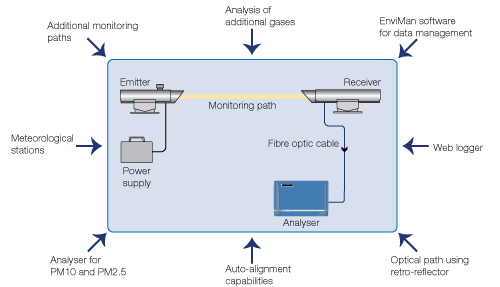The OPSIS DOAS system is different and provides a fast monitoring system that gives high data availability at low cost.
The OPSIS system is based on a non-contact DOAS method, using an optical path. The optical light is transferred in an optical fibre to the analyser and one analyser can operate several paths.
A single OPSIS system will measure all relevant gaseous components, such as NO, NO2, SO2, O3, BTX, HNO2, NO3, formaldehyde, and NH3.
Urban Air Quality Monitoring by OPSIS
- High data availability
- Cost-effective, open-path technology
- Representative path-integrated data
- Direct monitoring of NO2
- Gas calibration only once per year
- Low energy consumption
- Operates with a minimum of maintenance
- Approved by MCERTS, TÜV, U.S. EPA, Chinese EPA, and others
System Overview

To measure air quality in the ambient air is a challenge. The monitoring site needs to be representative and not dependant on changes in local traffic. A large number of gaseous components need to be measured with high accuracy and high availability.